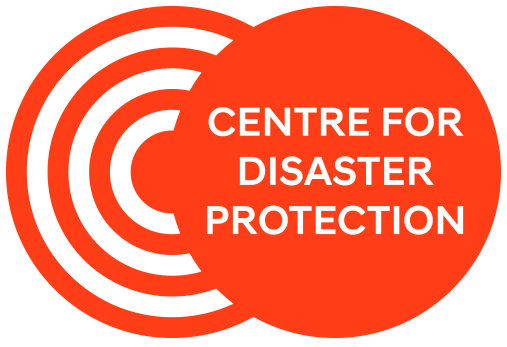The importance of being timely in climate disaster response
by Ashley Pople, Ruth Hill, Stefan Dercon and Ben Brunckhorst [1]
Credit: Dominic Chavez / World Bank
Humanitarian workers on the front line of crisis response carry out incredible lifesaving work every day to assist those in the greatest need. Yet repeatedly, reviews point to the fact that although billions of dollars are spent annually on humanitarian support to households in crisis, we have extraordinarily little evidence on the impact of this support.
In this blog, we summarise findings from the first large-scale evaluation that rigorously tests the impact of humanitarian cash transfers in response to a sudden climate shock, and the importance of being timely for an impactful response.
In 2020, Bangladesh experienced the second highest recorded floods since 1989. By carrying out the fastest cash allocation in their history, the Central Emergency Response Fund (CERF) enabled the World Food Programme (WFP) to deliver cash to about 23,000 households a week before the local flood peak. This anticipatory action was part of a vital series of anticipatory action pilots supported by OCHA. With support from the International Federation of Red Cross and Red Crescent Societies (IFRC) and the Bangladesh Red Crescent Society (BDRCS), the government and local NGOs, the United Nations was able to provide support to more than 220,000 people a few days prior to and during peak flooding.
Unlike in previous years when response preparation started after devastating flooding materialised, WFP provided a small cash transfer of $53 via mobile money in advance of peak flooding, based on flood predictions and an action plan that had been approved at the start of the monsoon season. The response was faster, and cheaper than during the last major floods in 2017 and 2019, when support arrived about 100 days after peak flooding.
We spoke to nearly 9,000 affected households to see how receiving this cash enabled them to prepare for the crisis and protect their families and livelihoods. The cash was largely spent on food, with a large impact on food security during the flood: households were 36% less likely to go a day without eating if they had received the transfer, compared to households that did not.
We also found evidence that timely cash support did more than provide temporary relief during the flood. It also helped households change their behaviour in ways that could have long-term benefits:
Cash transfers arriving before the flood encouraged households to take action to reduce its impact. Households that received cash were 12% more likely to evacuate and 17% more likely to evacuate their livestock. As a result, beneficiaries were 8% less likely to lose small livestock and 5% less likely to lose poultry during and after the flooding.
Child food consumption was better protected in beneficiary households, even three months later. Children in households that received cash were 4% more likely to have consumed three meals in the day prior to the survey. This is a particularly important finding, because a large body of evidence shows that when children’s food security is compromised it affects children’s physical and cognitive development, which can have lasting impacts into adulthood.
Beneficiaries were able to avoid costly borrowing by borrowing less and more cheaply. They were 3% less likely to borrow, borrowed 6% less when they did, and the interest rates on loans obtained were 12% lower.
After three months, beneficiaries had higher well-being and appeared to be recovering more quickly. They were 6% more likely to work and hours of work were 7% higher.
The size of the effects of receiving the cash after three months are small, but sizeable given the amount of the transfer, and are surprisingly broad, impacting both current and future welfare.
The evaluation also provided some important operational lessons. We found that speed matters, even when acting early. Households that received a cash transfer one day earlier during the floods had a small, but marginal increase in welfare. This highlights the importance of investing in identifying, enrolling and targeting the most vulnerable households and people well in advance of disasters and the value of using earlier triggers to release funding.
This evaluation is a start to learning more about effective disaster response, and the importance of speed and timing. Much more learning on emergency response is needed. There are real challenges to conducting rigorous impact evaluations of disaster response. The usual kinds of pre-support preparatory work in impact evaluations are impossible to do when it is not known when or where disasters will hit, or how beneficiaries will be targeted. We hope this work motivates more evidence in this area by showing it is possible to do evaluations. When we do, we can document the impact of the hard work of humanitarian partners and identify clear lessons on the timing and nature of support.
[1] Author order randomized using the AEA author randomization tool

